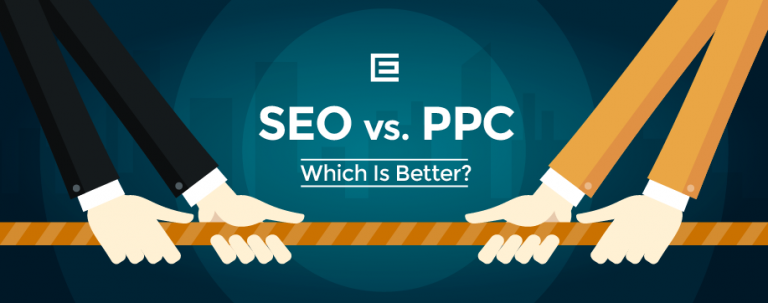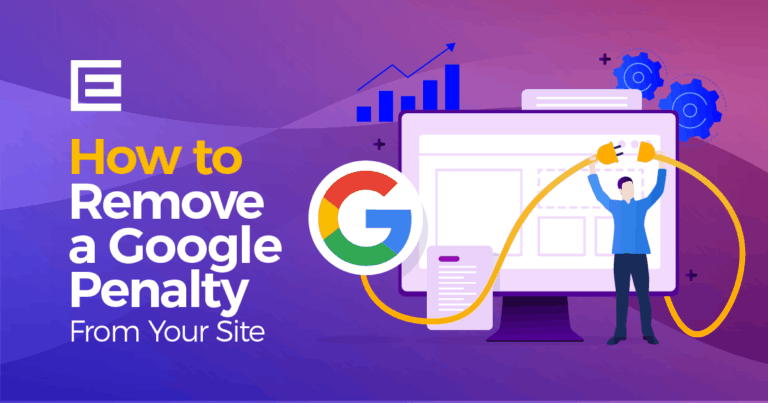Google’s algorithm updates are designed to improve the relevance, accuracy, and quality of search results for users. Over the years, Google has rolled out numerous updates, each targeting different aspects of the search process. From major overhauls like the Panda and Penguin updates, which focused on content quality and link practices, to more nuanced changes aimed at local search and mobile usability, these updates continuously reshape the digital landscape.
Staying informed about these updates is important for anyone involved in digital marketing, SEO, or website management. The reason is twofold: firstly, understanding these updates helps in aligning websites with Google’s guidelines, ensuring better visibility and higher rankings in search results.
Secondly, it’s about adapting to the evolving digital environment. As user behaviors and technologies change, Google’s algorithm updates reflect these trends, making it essential for businesses and content creators to stay ahead of the curve. Ignoring these updates can result in decreased website traffic, lower search rankings, and ultimately, a diminished online presence.
Therefore, keeping abreast of Google’s algorithm updates is not just about compliance; it’s about seizing opportunities to optimize digital strategies in an ever-changing online world.
Understanding Google Algorithm Updates
Google algorithm updates refer to changes made by Google to its search engine’s algorithms, which are the complex systems and formulas used to retrieve data from its search index and instantly deliver the best possible results for a query. The primary purpose of these updates is to enhance the user experience by providing more relevant, accurate, and high-quality search results. Google continuously refines its algorithms to better understand and cater to user intent, penalize low-quality content, and reward websites that offer genuine value to users.
The impact of these updates on Search Engine Optimization (SEO) is significant and multifaceted. Each update can potentially change how Google evaluates and ranks web pages, meaning that what worked for SEO yesterday might not work today. For instance, updates targeting content quality can diminish the rankings of websites with thin or duplicated content, while those focusing on user experience can penalize sites that are not mobile-friendly or have slow loading times. As a result, SEO strategies must be dynamic and adaptable, constantly evolving in response to these updates.
SEO professionals and website owners must pay close attention to these updates because they can dramatically affect website traffic and visibility. A positive change in Google’s algorithm can boost a website’s ranking, leading to increased organic traffic and better online visibility. Conversely, a negative impact can result in a significant drop in search rankings, leading to a decrease in website traffic and potential revenue losses.
Therefore, understanding and adapting to Google algorithm updates is crucial for maintaining and improving a website’s search engine performance, making it an essential aspect of effective digital marketing and online presence management.
History of Google Algorithm Updates
One of the earliest notable updates was the “Florida” update in 2003, which marked Google’s first major crackdown on keyword stuffing and other black-hat SEO tactics. This was followed by a series of updates like “Brandy” and “Austin,” which further refined the search algorithms, focusing on link quality, content relevance, and the use of Latent Semantic Indexing (LSI) to understand user intent.
In 2011, the “Panda” update was a game-changer, targeting websites with low-quality content, such as those with excessive ads, poor user experience, or duplicate content. This update significantly altered the SEO landscape, penalizing websites that failed to provide genuine value to users. The following year, the “Penguin” update was released, focusing on penalizing sites engaging in manipulative link practices and keyword stuffing.
Another milestone was the “Hummingbird” update in 2013, which was a complete overhaul of the core algorithm. It aimed to better understand the context and intent behind users’ queries, making search results more relevant and precise. This update laid the groundwork for future updates focusing on natural language processing and understanding user intent.
The “Mobilegeddon” update in 2015 marked Google’s shift towards mobile-first indexing, prioritizing mobile-friendly websites in search results. This update underscored the growing importance of mobile usability in SEO strategies.
More recent updates, like the “Medic” update in 2018 and the “BERT” update in 2019, have continued to refine Google’s focus on content quality, user intent, and the overall user experience. The “Medic” update seemed to disproportionately affect health and wellness sites, emphasizing expertise, authority, and trustworthiness in content. Meanwhile, BERT (Bidirectional Encoder Representations from Transformers) represented a significant leap in natural language processing, aiming to better understand the nuances and context of search queries.
These updates, among many others, illustrate Google’s ongoing efforts to improve search quality and user experience. Each update has specific focuses, but they all share a common goal: to deliver the most relevant, high-quality content to users. For SEO professionals and website owners, understanding this history is crucial for developing strategies that align with Google’s evolving standards.
Types of Google Algorithm Updates
Google’s algorithm updates can be broadly categorized into several types, each targeting specific aspects of search and website performance. Understanding these different types of updates is crucial for SEO professionals and website owners to optimize their sites effectively.
Core Updates
Core updates are significant changes to Google’s main search algorithm. They are designed to improve the overall quality and relevance of search results. Unlike other updates that target specific issues, core updates are comprehensive and can affect a wide range of factors, from content quality to user experience. These updates usually roll out several times a year and can result in noticeable fluctuations in search rankings. The primary goal of core updates is to ensure that Google is continually delivering the most relevant and authoritative content to its users.
Spam Updates
Spam updates specifically target websites that employ deceptive or manipulative practices to improve their search rankings. These practices include keyword stuffing, cloaking, and using private blog networks for artificial link building. Spam updates aim to improve the quality of search results by penalizing sites that violate Google’s Webmaster Guidelines. By doing so, Google ensures a level playing field for all websites and discourages the use of black-hat SEO techniques.
Security Updates
Security updates are focused on safeguarding users from harmful and malicious websites. These updates prioritize websites that provide a secure browsing experience, typically those using HTTPS (Hypertext Transfer Protocol Secure). Google’s emphasis on security encourages website owners to adopt SSL/TLS certificates, ensuring data transmitted between the web server and browser remains encrypted and secure. This not only protects users but also fosters trust in the website.
Local Search Updates
Local search updates are tailored to improve the accuracy and relevance of results in Google’s local search. These updates enhance the user experience for location-based queries, ensuring that local businesses and services are appropriately ranked based on relevance, distance, and prominence. Factors like Google My Business listings, local keywords, and user reviews play a significant role in these updates. For businesses relying on local foot traffic, staying abreast of local search updates is essential.
Mobile Usability Updates
With the increasing prevalence of mobile internet usage, Google has placed a strong emphasis on mobile usability. Updates in this category focus on optimizing the search experience for mobile users. This includes prioritizing mobile-friendly websites in search results, ensuring fast loading times, and improving the overall usability on smaller screens. These updates reflect Google’s commitment to providing an optimal search experience across all devices, making mobile optimization a critical component of modern SEO strategies.
Each type of Google algorithm update serves a specific purpose in enhancing the search experience and maintaining the integrity of search results. By understanding and adapting to these updates, website owners and SEO professionals can ensure their sites remain compliant and perform well in Google’s ever-evolving search landscape.
Recent Google Algorithm Updates
In 2023, Google continued its tradition of refining and enhancing its search algorithms through a series of updates, each aimed at improving the user experience and the quality of search results. These updates have had significant implications for search engine optimization (SEO) and website rankings.
One of the notable updates in 2023 was a November core update, which is a routine adjustment that Google makes several times a year. Core updates are designed to improve the overall relevance and quality of search results. This particular update had a broad impact across numerous websites and industries. Websites with high-quality, relevant content saw an improvement in their rankings, while those with outdated, low-quality content experienced a drop. This update reinforced the importance of creating valuable, user-centric content.
Another significant update focused on enhancing the evaluation of E-A-T (Expertise, Authoritativeness, and Trustworthiness) factors, particularly for YMYL (Your Money Your Life) websites. This update aimed to ensure that websites providing critical information, such as health, finance, and legal advice, are held to the highest standards of accuracy and reliability. As a result, websites with authoritative content and credible sources saw a boost in their rankings, emphasizing the need for expertise and trustworthiness in content creation.
Google also rolled out updates targeting specific aspects of user experience, such as page loading speed and mobile usability. These updates prioritized websites that offer a seamless and efficient user experience, especially on mobile devices. Websites optimized for mobile devices, with fast loading times and easy navigation, benefited from these updates. This shift underscored the growing importance of mobile optimization in Google’s ranking criteria.
In addition to these, there were updates aimed at combating spam and manipulative link-building practices. These updates reinforced Google’s commitment to maintaining the integrity of its search results by penalizing websites that engage in deceptive SEO practices.
The impact of these updates on search results was significant. Websites that adhered to Google’s guidelines and focused on providing a high-quality user experience saw improvements in their rankings. In contrast, sites that failed to keep up with these updates experienced drops in their search visibility. This trend highlighted the ongoing need for websites to stay updated with Google’s best practices, focusing on creating high-quality, relevant content, and providing an excellent user experience.
Overall, the 2023 Google algorithm updates continued to shape the digital landscape, pushing for higher standards in content quality, user experience, and ethical SEO practices. For website owners and digital marketers, these updates serve as a reminder of the importance of adopting a user-first approach and staying agile in the ever-evolving world of search engine optimization.
How Google Algorithm Updates Affect Websites
Google’s algorithm updates can have an intense impact on websites, influencing everything from their visibility in search results to the amount of traffic they receive. Understanding these effects is crucial for website owners and SEO professionals to adapt their strategies effectively.
Changes in Website Rankings
One of the most immediate effects of a Google algorithm update is a change in website rankings. These updates can cause significant fluctuations in where a website appears on the search engine results page (SERP). For instance, an update focusing on content quality might boost the rankings of websites with original, well-researched content, while pushing down those with duplicated or low-value content. Similarly, updates targeting user experience factors like mobile-friendliness or page loading speed can favor websites that excel in these areas. The net result is that even well-established websites can see their rankings change overnight, highlighting the need for ongoing SEO optimization in line with Google’s evolving standards.
Impact on Website Traffic
Changes in rankings directly correlate with website traffic. A higher ranking typically leads to increased visibility, resulting in more organic traffic. Conversely, a drop in rankings can lead to a significant decrease in visitors. This fluctuation in traffic can have substantial implications for businesses, especially for those heavily reliant on online visibility for sales and lead generation. For example, a retail website that loses its top-ranking position for key product searches might see a decline in sales, while a blog that improves its ranking could experience a surge in readership and ad revenue.
Case Studies of Websites Affected by Updates
One well-documented case study of a website that was significantly impacted by the Google Panda update is that of “EzineArticles.com,” a popular article submission and content aggregation site.
EzineArticles.com and the Google Panda Update
Background: Before the Panda update, EzineArticles.com was a highly popular platform where writers could submit articles on various topics. These articles were often used by other websites for content, and the authors benefited from exposure and backlinks. The site was known for its vast quantity of articles, covering a wide range of subjects.
Impact of Panda Update:
- Significant Traffic Drop: When Google rolled out the Panda update in February 2011, EzineArticles.com was one of the most notable casualties. The update targeted sites with thin, low-quality, or duplicate content. EzineArticles, with its massive repository of articles of varying quality, saw a significant drop in its Google search rankings.
- Traffic Decline: Reports indicated that EzineArticles experienced a dramatic decline in traffic post-Panda. Some analyses suggested that the site lost up to 90% of its Google search traffic as a result of the update. This decline was primarily because many of the articles on EzineArticles, which previously ranked well, plummeted in search rankings due to their perceived low quality or lack of originality.
Response and Adjustments:
- Quality Control Measures: In response to the Panda update, EzineArticles.com had to significantly adjust its content strategy. The site implemented stricter quality control measures, raised the standards for article submissions, and removed a large volume of existing content that did not meet these new standards.
- Focus on Value: The site shifted its focus towards encouraging higher-quality, more valuable content from its contributors. This move was aimed at recovering from the Panda hit and aligning with Google’s emphasis on content quality.
Lessons Learned: The case of EzineArticles.com serves as a cautionary tale for content-based websites. It highlights the importance of focusing on the quality and originality of content rather than just quantity. The Panda update underscored Google’s commitment to rewarding websites that provide genuine value to users, and the experience of EzineArticles.com showed how significant the impact of these algorithm changes could be.
This case study is a classic example of how major algorithm updates like Panda can reshape the online landscape, forcing websites to adapt their strategies to maintain or recover their search engine visibility.
Another specific case study of a website affected by the Google Penguin update is that of “WPMU DEV,” a popular WordPress resource site. This case is often cited in discussions about the impact of the Penguin update and how websites recovered from it.
WPMU DEV and the Google Penguin Update
Background: WPMU DEV was well-known in the WordPress community for its wide range of themes, plugins, and WordPress-related articles. Prior to the Penguin update, the site enjoyed high search rankings and significant traffic from Google.
Impact of Penguin Update:
- Penguin Update Rollout: Google first released the Penguin update in April 2012 to target websites that were using manipulative link-building techniques to improve their search rankings. These techniques included the use of unnatural inbound links, keyword stuffing in anchor text, and participation in link schemes.
- Traffic Decline: WPMU DEV was significantly impacted by the Penguin update. The site saw a dramatic drop in its Google search rankings, primarily due to its backlink profile, which included many low-quality links. This decline in rankings led to a substantial decrease in organic traffic.
Response and Adjustments:
- Link Audit and Cleanup: WPMU DEV conducted a thorough audit of their backlinks and engaged in an extensive cleanup process. This involved reaching out to webmasters to remove or disavow low-quality links and focusing on building more natural, high-quality backlinks.
- Content and SEO Strategy Overhaul: The site also revamped its content and overall SEO strategy. They focused on creating high-quality, relevant content and adhered more strictly to Google’s Webmaster Guidelines.
- Recovery: Over time, these efforts paid off, and WPMU DEV began to see a recovery in its search rankings and traffic. The site’s experience became a testament to the possibility of recovery after being penalized by a major Google algorithm update.
Lessons Learned: The case of WPMU DEV highlights the risks associated with manipulative SEO practices, especially in link building. It also demonstrates the importance of a proactive and comprehensive approach to SEO, which includes regular audits of backlink profiles and adherence to ethical SEO practices. Their recovery illustrates that while recovery from a Google penalty can be challenging and time-consuming, it is achievable with the right strategies and a focus on quality and compliance with Google’s guidelines.
Preparing for Google Algorithm Updates
Navigating the ever-changing landscape of Google algorithm updates requires a proactive approach to website optimization. By adhering to best practices, implementing strategic measures, and utilizing the right tools, website owners and SEO professionals can better prepare for and adapt to these updates.
Best Practices for Website Optimization
The foundation of preparing for any Google algorithm update lies in following SEO best practices. This includes creating high-quality, relevant content that provides value to users. Content should be well-researched, informative, and tailored to the audience’s needs and interests. Additionally, ensuring the website has a clean, user-friendly design is crucial. This means having a responsive layout, fast loading times, and easy navigation, which are essential for a positive user experience.
Technical SEO should not be overlooked. This involves optimizing website structure, using appropriate tags, and ensuring that the site is easily crawlable by search engine bots. Regularly updating the website with fresh content and maintaining a robust, natural backlink profile are also key components of a solid SEO strategy.
Strategies to Minimize Negative Impacts
To minimize the negative impacts of algorithm updates, it’s important to stay adaptable and responsive. Regularly auditing the website for SEO health can help identify and rectify issues before they become problematic. This includes checking for broken links, optimizing for mobile usability, and ensuring that all content is up-to-date and relevant.
Diversifying traffic sources is another effective strategy. Relying solely on organic search traffic can be risky; therefore, integrating other channels like social media, email marketing, and paid advertising can help mitigate the impact of fluctuations in search rankings.
Building a strong brand and focusing on user engagement can also cushion against the effects of algorithm changes. Websites with a loyal audience and high engagement rates are often viewed more favorably by Google, as they indicate content quality and relevance.
Tools for Monitoring Algorithm Updates
Staying informed about when and how Google updates its algorithms is essential. There are several tools and resources available for monitoring these updates. Google’s own Search Console is a valuable tool, providing insights into how a website is performing in search results and highlighting any issues that need attention.
SEO software platforms like Moz, SEMrush, and Ahrefs offer features that track search rankings and alert users to potential algorithm changes. These tools can help identify patterns and shifts in search rankings, offering clues about the impact of recent updates.
Additionally, staying engaged with the SEO community through forums, blogs, and social media can provide valuable insights. Industry experts often share their observations and advice on dealing with algorithm updates, making these platforms a useful resource for staying ahead of the curve.
FAQs
What is a Google Algorithm Update?
A Google algorithm update refers to changes made by Google to its search engine algorithms, which are the complex systems and rules that determine the ranking of websites on its search engine results pages (SERPs). These updates are designed to improve the quality, relevance, and accuracy of search results. They can range from minor adjustments to major overhauls that significantly affect search rankings and website traffic.
How Often Does Google Update Its Algorithm?
Google frequently updates its algorithm, with minor changes happening almost daily. However, more significant, broad changes, known as “core updates,” occur several times a year. These core updates are usually announced by Google and can have a substantial impact on search engine rankings. Additionally, there are occasional specialized updates targeting specific aspects like spam, security, or local search, which can happen at any time.
How Can I Tell If My Site is Affected by an Algorithm Update?
To determine if your site has been affected by a Google algorithm update, monitor your website’s traffic using tools like Google Analytics and observe any significant fluctuations. A notable decrease in organic search traffic around the time of a known update is a strong indicator. Additionally, tools like Google Search Console can provide insights into your site’s performance in search results and alert you to any issues that may be affecting your ranking.
What Should I Do If My Site is Negatively Impacted by an Update?
If your site is negatively impacted by a Google algorithm update, the first step is to assess and understand the reasons behind the drop in rankings. Review Google’s guidelines and your website’s content, technical SEO, and user experience. Focus on improving areas that are not in line with best practices, such as enhancing content quality, ensuring mobile-friendliness, and improving site speed. It’s also advisable to stay informed about the specifics of the update, as Google sometimes provides guidance on what issues the update targeted. Remember, recovery from an algorithmic impact can take time, and it requires consistent effort in maintaining and improving your website according to Google’s standards.
Tags: Digital Marketing • Google • Search Engine Optimization







